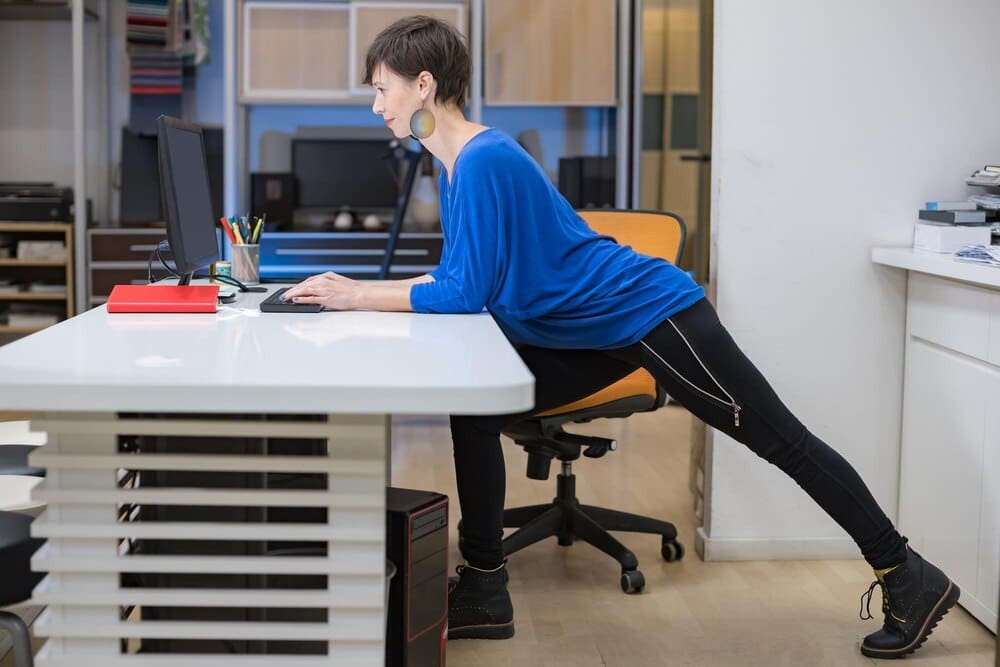For the millions of professionals who spend their days seated at a desk, a hidden epidemic of stiffness is silently compromising their health and performance. This issue centers on the thoracic spine—the 12 vertebrae of the mid-back—which, when immobile, triggers a cascade of physical problems, including neck, shoulder, and lower back pain. By understanding why prolonged sitting damages this crucial area and implementing simple, daily mobility exercises, desk workers can counteract the negative effects of their work environment, improve their posture, enhance their breathing, and unlock a higher quality of movement in all aspects of life.
Understanding the Thoracic Spine: Your Body’s Forgotten Hinge
The human spine is a marvel of engineering, composed of three main sections, each with a distinct primary function. The cervical spine (your neck) and the lumbar spine (your lower back) are designed primarily for mobility and stability, respectively. Sandwiched between them is the thoracic spine, which connects to your rib cage and is uniquely built for rotational movement, as well as flexion and extension.
Think of it as the central, rotating hub of your torso. When you turn to look over your shoulder, a significant portion of that movement should originate from your mid-back. This design allows the more vulnerable lower back and neck to remain relatively stable, protecting them from excessive twisting forces that can lead to injury.
The thoracic spine’s connection to the rib cage is also vital for respiration. As you inhale, your ribs should expand outwards and upwards, a movement facilitated by the flexibility of the thoracic vertebrae. A mobile thoracic spine is therefore essential for deep, efficient breathing.
How Desk Work Creates Thoracic Stiffness
The modern work environment is often at odds with our body’s anatomical needs. When you sit for hours hunched over a keyboard, your body begins to adapt to that static, flexed position. This common posture, known as kyphosis, is the primary culprit behind a stiff thoracic spine.
In this slumped position, the vertebrae of the mid-back are held in a constant state of slight flexion, or rounding. Over time, the joints lose their capacity to move in the opposite direction—into extension and rotation. The surrounding connective tissues, including ligaments and fascia, begin to shorten and stiffen, effectively locking the spine into that rounded shape.
This process creates significant muscle imbalances. The muscles on the front of your body, like your pectorals (chest) and anterior deltoids (front of the shoulders), become chronically short and tight. Conversely, the muscles on your upper back, such as the rhomboids and mid-trapezius, become overstretched and weak, losing their ability to pull your shoulders back and maintain an upright posture.
Essentially, the principle of “use it or lose it” applies directly to your spinal mobility. By not regularly moving your thoracic spine through its full range of motion, you are training it to become immobile.
The Domino Effect: Consequences of a Stiff Mid-Back
A stiff thoracic spine doesn’t exist in isolation. Because the body works as an interconnected chain, immobility in one area forces other areas to compensate, often leading to pain and dysfunction. This creates a predictable pattern of problems commonly seen in desk workers.
Neck and Shoulder Pain
When your mid-back is rounded forward, your head naturally follows. To keep your eyes level with your computer screen, you are forced to crane your neck upwards, hyperextending the cervical spine. This “forward head posture” places immense strain on the neck muscles and joints, leading to chronic pain, tension headaches, and stiffness.
Furthermore, this poor posture alters the position of your shoulder blades (scapulae), causing them to tilt forward and wing out. This change reduces the subacromial space—the small area in your shoulder where the rotator cuff tendons pass through. With less space, these tendons are more likely to get pinched during overhead movements, a painful condition known as shoulder impingement.
Lower Back Pain
Perhaps the most common complaint among office workers is lower back pain, and a stiff thoracic spine is a major contributor. Your lumbar spine is built for stability and has very little rotational capacity. When your thoracic spine loses its ability to rotate, your body will seek that movement elsewhere—most often from the lower back.
Forcing the lumbar spine to twist beyond its intended range can lead to excessive wear and tear on the intervertebral discs, facet joints, and surrounding ligaments. This compensation pattern is a leading cause of chronic lower back pain, muscle spasms, and even more serious conditions like disc herniation.
Impaired Breathing Mechanics
A rounded, stiff thoracic spine directly restricts the movement of your rib cage. This limitation prevents your diaphragm, the primary muscle of respiration, from descending fully during inhalation. As a result, your body compensates by relying on smaller, secondary breathing muscles in the neck and shoulders.
This leads to a pattern of shallow, inefficient chest breathing. Not only does this reduce your oxygen intake, potentially affecting energy levels and cognitive function, but it also reinforces tension in the neck and shoulder muscles that are already overworked from poor posture.
Action Plan: Reclaiming Your Thoracic Mobility
The good news is that thoracic spine stiffness is reversible. By incorporating targeted mobility exercises and making small environmental adjustments, you can restore healthy movement to your mid-back and alleviate the associated aches and pains. Consistency is more important than intensity.
Start with Simple Desk-Based Movements
The most effective strategy is to break up long periods of sitting with frequent “movement snacks.” Set a timer to remind yourself to move every 30-45 minutes. These breaks don’t need to be long or complicated.
A simple and effective exercise is the Seated Cat-Cow. Sit at the edge of your chair with your feet flat on the floor. Place your hands on your knees. As you inhale, arch your entire spine, pulling your chest forward and looking up (Cow). As you exhale, round your spine, tucking your chin to your chest and pulling your navel in (Cat). Focus on initiating the movement from your mid-back. Repeat 5-10 times.
Another excellent option is a Seated Spinal Twist. Sit tall and cross your arms over your chest. Slowly rotate your torso to one side, keeping your hips stationary. Hold for a deep breath, then return to the center and repeat on the other side. This gently mobilizes the thoracic spine in the rotational plane it’s designed for.
Incorporate Targeted Drills
For more significant improvements, dedicate 5-10 minutes each day to specific mobility drills. These can be done first thing in the morning, after work, or as a warm-up before a workout.
Thoracic Extensions over a Foam Roller: Lie on the floor with a foam roller positioned horizontally across your mid-back, just below your shoulder blades. Support your head with your hands to avoid neck strain. With your knees bent and feet flat on the floor, gently lower your head and shoulders towards the ground, creating a gentle arch or extension in your thoracic spine. Hold for a breath, then return to the starting position. Roll up or down slightly to target different segments of your spine.
Quadruped Thoracic Rotations: Start on your hands and knees in a tabletop position. Place your right hand behind your head, elbow pointing out to the side. Keeping your core engaged, slowly bring your right elbow down towards your left wrist. Then, reverse the motion, rotating upwards and opening your chest to the right, pointing your elbow towards the ceiling. Follow your elbow with your eyes. Perform 8-12 repetitions on each side.
Open Book Stretch: Lie on your left side with your knees bent at a 90-degree angle and stacked on top of each other. Extend both arms straight out in front of you at shoulder height, palms together. Keeping your knees together, slowly lift your right arm up and over your body, attempting to touch the floor on the other side. Allow your head and torso to follow the movement. Hold for a breath before returning to the start. Perform 8-12 repetitions on each side.
Strengthen to Stabilize
Mobility must be paired with stability. Once you’ve improved your range of motion, you need to strengthen the muscles of your upper back to help you maintain good posture throughout the day. Incorporate exercises like Rows, Face Pulls, and Band Pull-Aparts into your fitness routine. These movements directly target the weak, overstretched muscles and help pull your shoulders back into a healthier position.
A Foundation for Lifelong Wellness
Addressing thoracic spine mobility is not just about relieving pain; it’s about restoring a fundamental component of healthy human movement. A mobile mid-back is the foundation for better posture, deeper breathing, safer workouts, and a more resilient body. By transforming your relationship with your desk—viewing it not as a static workstation but as a place that requires regular movement breaks—you can combat the physical toll of modern work and build a stronger, more functional body for years to come.







